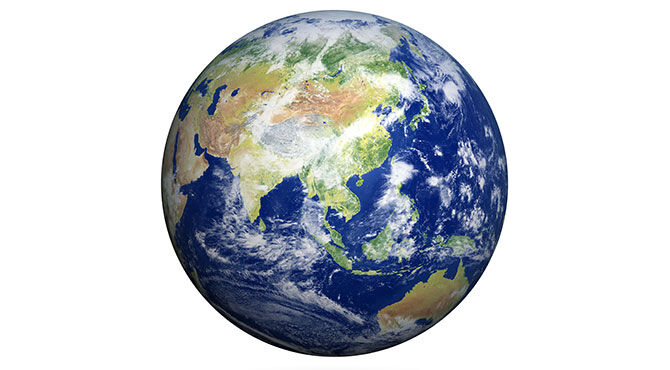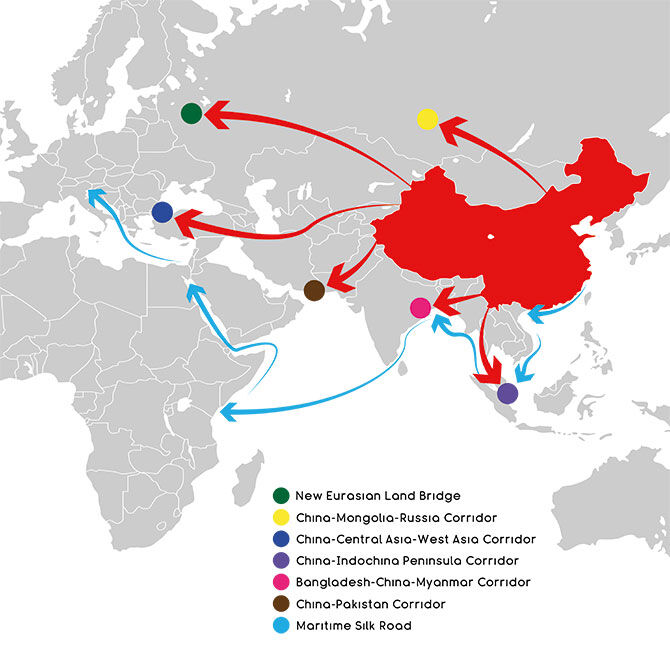Welcome to the Asian century - part 1
There exists a wealth of speculation as to what the Asian Century is. In the first of a two-part series, we explore what it could mean for global politics, economics, trade and mobility.

What is the Asian Century?
The Asian Century is typically defined as the time when the economies of Asia will be larger than the combined economies of the rest of the world. The term is also used to refer to the dominant role the region is expected to play in the 21st century, as an outcome of the past two decades of economic growth that was initially led by China and India.The statistics make a compelling argument. Asia is home to:- More than half of the world’s population
- 50% of global GDP
- 70% of the world’s 30 largest cities
- The world’s largest manufacturing hub
- Soon, the largest consumer market in the world
Outperformers are more than China and India
Two of the countries often cited for their enormous growth have been China and India. Both countries are economic forces, but they aren’t the only rising economies. The McKinsey Global Institutes paper on Outperformers in ASEAN ranks China, Hong Kong, Indonesia, Malaysia, Singapore, South Korea, and Thailand as long-term outperformers and Cambodia, Laos, Myanmar, and Vietnam as recent outperformers.What is an outperformer?
Outperformers are defined as those whose per capita growth has consistently outpaced US growth from 1965 through 2016.Why are these economies growing?
Globalisation and low-cost labour helped Asia to become the world’s largest manufacturing hub. While it continues to hold that position, there is far more happening in the region. The World Intellectual Property Organization (WIPO) publishes the Global Innovation Index, which ranks countries based on 80 indicators. Several countries ranked highly on the 2019 Index, including Korea, Hong Kong, China, Japan, Malaysia, Vietnam, Thailand, and India. Singapore continues to hold its spot in the top ten.The Asian Digital Transformation Index 2018, published by The Economist ranks Singapore highest in the world for digital technology advancement. Other key findings from the study showcase areas in which Asia is closing the disparity gap between itself and the countries of the West regarding commitment to long-term digital strategies. It specifically cites upcoming critical technologies including Fiber, 5G and AI as Asian strengths. For example, Chinese company Huawei is the recognised global leader in 5G technology. In 2018, South Korea introduced the first 5G service in the world – although it was not yet available to consumers – and Japan is the world leader in robotics.Related articles:
- Leaders gather as China revamps Belt and Road project
- UK woos Asian nations to boost post-Brexit trade
- Supporting relocating families in the APAC region
- China drives non-EU student numbers to record high
How could the Asian Century impact the rest of the world?
Asia is quickly moving from an observer of the global economy into an active leadership position. It is doing so without some of the advantages that helped to enable cohesion in Europe and North America. Comparatively speaking, communication is more challenged because Asia has no common root language to tie the more than 15 major and hundreds of minor languages together. Neither do the countries have a common history, culture or religion. Despite those obstacles to understanding and cooperation, Asia continues to develop relationships between its countries. The success of the region’s ability to do so will help to dictate the extent of ongoing and future influence the countries of Asia will have on the rest of the world.Trade within Asian countries is second only to trade within the EU
Asian countries' trade with the rest of the world has continued and even expanded, but the regional trade and cooperation that was all but eliminated during the colonial years have now been re-established. There is more intra-Asia trade than that which occurs through the North American Free Trade Agreement (NAFTA). At 52.4% of all the trade of Asian countries, Asian intra-regional trade is second only to the European Union, whose rate is 63%. The exchange is not just in the manufacturing sector, most prominently on display in the US-China trade war – it’s technology, finance and logistics.An example of intra-Asian cooperation: the Belt and Road Initiative (BRI)
One example of the growing power and presence of intra-Asian regional cooperation is the Belt and Road Initiative (BRI). Parag Khanna’s book The Future is Asian discusses the importance of BRI and touts it as "the most significant diplomatic project of the 21st century ... conceived in Asia and launched in Asia and will be led by Asians." The China-led initiative has a goal to link Asia, Africa and Europe via land and sea trade routes reminiscent of the Silk Road of 2,000 years ago. The end result of BRI will be better regional integration, as well as more trade and economic growth. It is estimated to cost more than US $1 trillion and involves infrastructure projects in excess of 68 participating countries.
For more news, visit our Asia section.
Subscribe to Relocate Extra, our monthly newsletter, to get all the latest international assignments and global mobility news.Relocate’s new Global Mobility Toolkit provides free information, practical advice and support for HR, global mobility managers and global teams operating overseas. Access hundreds of global services and suppliers in our Online Directory
Access hundreds of global services and suppliers in our Online Directory
©2025 Re:locate magazine, published by Profile Locations, Spray Hill, Hastings Road, Lamberhurst, Kent TN3 8JB. All rights reserved. This publication (or any part thereof) may not be reproduced in any form without the prior written permission of Profile Locations. Profile Locations accepts no liability for the accuracy of the contents or any opinions expressed herein.



























